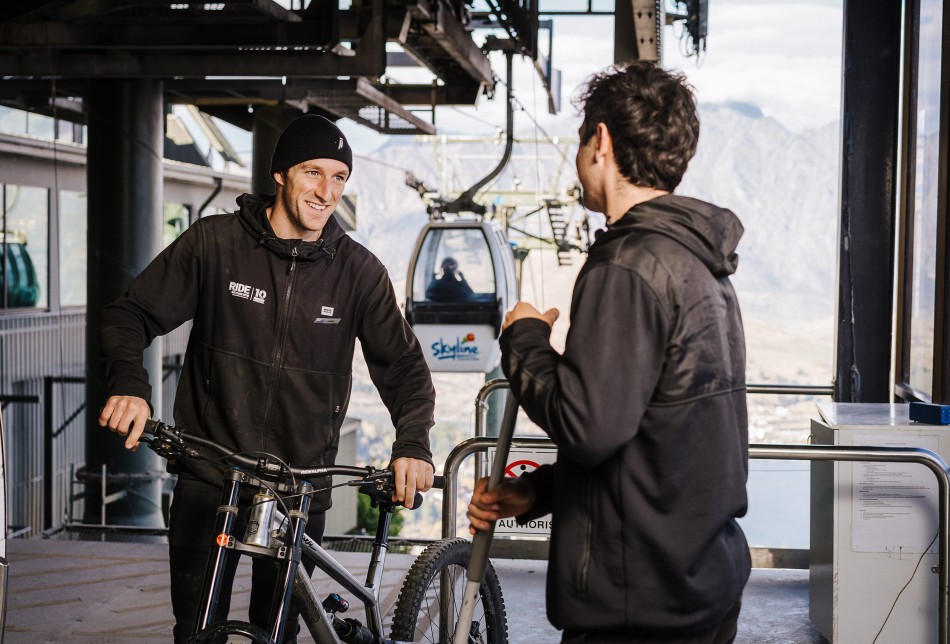8 reasons to hire a professional photographer
In a content-rich, visual world, there’s a growing need to stand out from the crowd and do things a little differently. Working with a professional photographer is the ultimate way to tell your unique story.
There's a time and place to grab the phone and document what's happening, and sometimes it's the only camera with you. Also the cost of hiring professional photographer can sometimes be off-putting. We get this, not every photo associated with your business needs to be a production.
We've found there's a really nice balance where scheduling regular, shorter shoots with a photographer who understands your goals works really well. This spreads the cost over time and builds a growing library of content to draw upon. We're strong advocates for investing in your content, your brand, your story. Here's a collection of eight reasons why we think you should consider investing in professional photography.
1. Perspective
You might have an image in your mind and know exactly what you want. This is a good thing, but it also may not be the right, or only, answer. A pro photographer will bring a fresh creative eye into the room which will see opportunities even in the ordinary. They’ll be able to assess your needs from an outside perspective, similar to what your customers will see. Seeing from your customers’ perspective can help translate for a visual outcome that’s easy for them to understand. The result will be an amplification of your brand’s ability to really connect with your audience. You should be able to get the images you wanted, plus far more images of value from a different perspective.
2. Longevity
We've directed photoshoots for a long time now and it’s great to see images helping to build the brand from shoots we worked on years ago. Investing in high quality shots from the beginning can create long lasting value. Plus using the same photographer means that the grading of the photos will have them all feeling like part of a cohesive set, even when taken years apart.
3. Light
Lighting is everything. Most professional photographers will be on the constant lookout for beautiful pockets of natural light or they will often have lighting equipment on hand. It takes years of experience to see a potentially winning shot while considering light and shadow. Lighting can make your images rich with emotion and detail, or even make flat or dark scenes come to life.


4. Sensor size
Getting more technical here and not to be confused with megapixel size, there's a big advantage to using a professional camera over a phone or consumer level camera. This being the ‘sensor size’. This is the part that captures the image and basically, bigger is better. Photographers will often use a camera with a full frame sensor which measures approximately 36mm x 24mm. This is equivalent to the former 35mm film cameras, resulting in greater depth, colour tone and quality of out-of-focus areas (yes this is important!). Some photographers will use medium format which is bigger again at 48mm x 36mm, similar to that of 120 film. In contrast, the latest phone sensors are still only approximately 13mm x 9mm at best. While we know this will increase over time as technology improves, the physical constraints will always be a factor for phones.
5. Lenses
In addition to the above technical comparison, the glass that’s in front of the sensor plays a huge role in the quality and feel of an image. Let's say a phone offers a 24mm field of view by default with an aperture of f/1.7. We can compare that to a full frame camera with a 24mm lens with an aperture of f/1.4. We're looking for a sharp focal point, and then the nice fall off to the out-of-focus areas of the image. The lens quality with larger elements of glass will always look better and creamier, particularly when paired with the much larger sensor size. And before you say it, no, it's not the same as a digitally generated portrait mode. See the comparison below as an example.

6. RAW Processing
Most smaller cameras and phones will offer a JPG or HEIC file, meaning the look, the colour temperature, the tint and contrast is baked into the image. Professional cameras will shoot in a RAW format, which leaves the image entirely flat and unedited. When the image is pulled into editing software like Lightroom or Capture One, we have total control over the final look of the image, matching that to your brand identity or specific campaign perfectly.
7. Pre production
One of the most important parts of a shoot, especially when there's talent and permits involved, is the pre-production phase. Professional photographers will take a brief, so they can determine the things needed like wet weather back up plans, PPE requirements, location permits, drone permits, model and property releases making the process as easy as possible for you. This means the shoot goes off without a hitch, maximising the investment of everyone’s time and resulting in images that can be used perpetually.
8. Experience
We firmly believe in engaging the best photographer suited to a particular project. Individual photographers have different skills, equipment, interests, personalities and abilities to deliver on specific briefs. You can engage a photographer working on their own, but it’s often better if they are part of your wider creative team. Either way, it’s important to consider existing content and future brand strategy to take full advantage of the opportunity and investment in photography.
—
We hope this article was helpful, and it gives you the confidence, to put photography into your budget this year. Fluid offers professional photography both in-house or through the network of talented photographers we regularly call upon. If you'd like to find out more, email us or view our photography portfolio.


